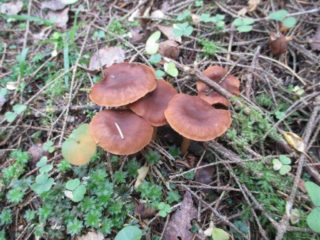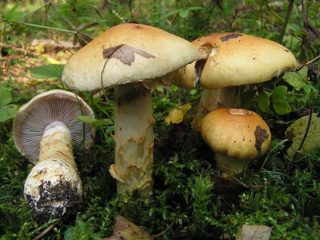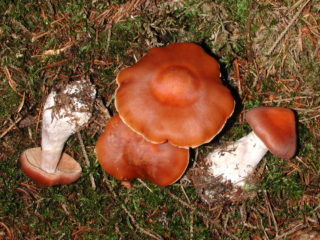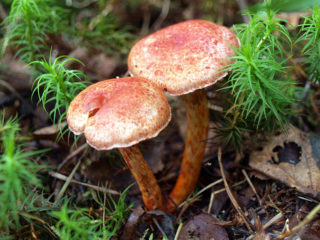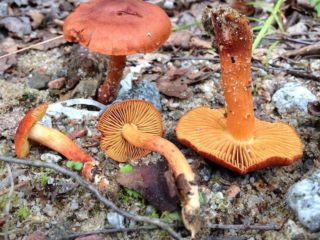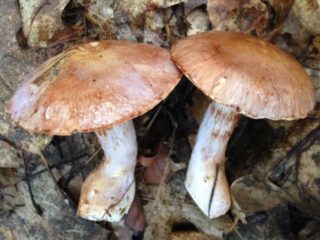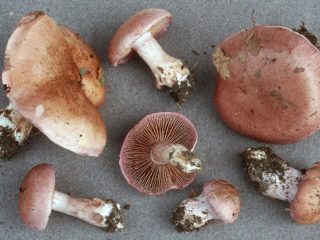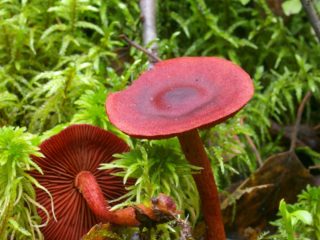Content
The red-olive cobweb belongs to the Cobweb family. In common parlance it is usually called fragrant or fragrant cobweb. The Latin name is Cortinarius rufoolivaceus.
Description of the red-olive webweed
The mushroom has a relatively small size and a thin stalk with a distinctive feature: a cobwebby cover. The cap of the fruiting body is mucous.
Description of the cap
The cap of the mushroom reaches 7 cm in diameter. As it grows, it changes: in young red-olive spider webs it is hemispherical, then gradually becomes convex. Adult fruiting bodies have a flat cap.Its color range is varied; as it grows, it changes from purple to red while maintaining the same shade. In the middle the cap is lilac-purple or reddish in color of varying intensity.

Old specimens have pink caps along the edges due to fading
The hymenophores of the red-olive cobwebs are in the form of plates that have a descending or jagged-accrete shape. In young fruiting bodies they are olive or purple, becoming brown as they ripen.
The spores are dark reddish, oval in shape, small in size with a warty surface. Dimensions vary between 12-14*7 microns.
Description of the leg
The maximum dimensions of the leg in adult specimens are 11*1.8 cm. It is cylindrical in shape, the base is widened, and has a reddish tint. The remaining length of the leg is purple. Its surface is smooth.

The length of the leg in this species reaches 5-7 cm
Where and how does it grow
This species is widespread in Europe and prefers mixed or broad-leaved forest plantations.
Due to its ability to form mycorrhizae with trees, it occurs in nature in large groups. Most often grows under oaks, beeches or hornbeams.
In Russia, the red-olive cobweb is collected in the Belgorod and Penza regions; it also grows in Tatarstan and Krasnodar. Specimens are also found in places with calcareous soil and moderately warm climatic conditions.
Is the mushroom edible or not?
The nutritional properties of the species have practically not been studied, but it belongs to the category of conditionally edible. The pulp is bitter, olive-greenish or pale purple in color. Mushrooms do not have a special aroma.Recommended for food fried.
Doubles and their differences
The fruiting bodies are externally similar to the icterus cobweb: the latter’s cap is brown with a pink or orange tint. But the double has purple plates and legs, and the flesh is bitter.
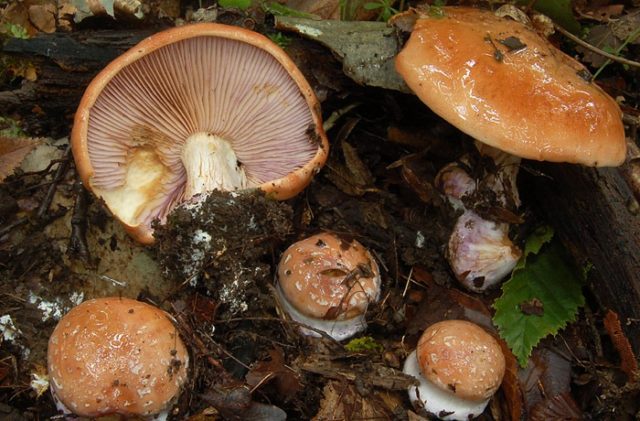
The double is conditionally edible, but due to its low taste it has no nutritional value
Conclusion
Red-olive cobweb is a mushroom listed in the Red Book. It is conditionally edible, but is practically not used as food, since its pulp is bitter. Found in coniferous-deciduous forests from mid-summer to October.

